Here it is, finally, my review of the Cosmicar/Pentax 25mm f/1.4 C-mount TV lens, mounted on the Olympus E-P1 via a C->m4/3 adapter. Want to know how it performs? Want to see loads of pictures taken with this lens? Then
Introduction
One of the great things about m4/3 (and there are a few great things) is that its flange back distance (the distance between mount and sensor) is a lot shorter than with most system cameras, especially DSLRs (who have to accomodate for a swing mirror, which m4/3 doesn’t). This allows for a wide range of third-party lenses to be adapted to m4/3 cameras. Among those are as good as any designed for conventional (D)SLR systems, as well as Leica M lenses and – which is an absolute novum in digital photography – C-mount lenses, designed for use with 16mm film or 1/3″-1″ CCTV cameras.
Ever since the introduction of the Micro Four Thirds standard those C-mount lenses have become more and more popular, yielding higher prices on the used market – and a good resale value. C-mount lenses have several advantages over native m4/3 and DSLR lenses. Those are:
- Since they are designed to be used with smaller sensors (up to 1″), they can be built considerably smaller than any m4/3 or common DSLR lens, yet offering quite large maximum apertures (0.95 not being uncommon!)
- This also makes them lighter.
- They are one of the few options if you’re looking for a (fast) manual-focus prime lens that fits the m4/3 concept size-wise.
But they also have several disadvantages:
- Since they are designed to be used with smaller sensors than m4/3, their image circle may not cover the whole m4/3 sensor, thus leading to more or less heavy vignetting (this is especially true for the shorter focal lengths below 25mm, but not so much of a problem with lenses 50mm and above.)
- The more affordable ones may show distortion and other quirks that are considered imperfect, but this might actually give the pictures a unique look.
- They’re all manual. Now personally I don’t consider this a disadvantage, but if you’re used to fully automated operation, this might seem awkward at first.
So, if you’re looking for a small, light, affordable, fast manual prime for your m4/3 camera and can live with the quirks of C-mount lenses, those are the ones to go for. You can get a used one in the 25mm range (which would equal a standard 50mm in 35mm terms) for less than $50 if you’re lucky, but prices can easily go beyond the magic $1000 limit if you’re after a pseudo-Noctilux.
But this isn’t what this article is about – it’s about the Cosmicar/Pentax 25/1.4, which you can have new for $89.95 from B&H Photo Video Audio. But if you’re lucky you can find a good used one (or a similar lens in the f/1.4 range) on eBay – I’ve got mine, together with a second one, for about said 50 bucks, both in good shape (see this earlier post.
Technical Preliminaries
So what am I going to write about in this review? Well, since this is not going to be an in-depth technical consideration, I won’t give you any charts or measurements. What I’m going to write about is how the lens performs in actual use. I will of course consider some technical aspects, i. e. its speed, its optical qualities (sharpness, bokeh, distortion, vignetting, flare) etc. But I will also report about the time I’ve spent with it shooting, and what my personal experience with this lens is.
Let’s start with some tech-talk. As I mentioned earlier on, C-mount lenses are considerably smaller than dedicated m4/3, 4/3, DSLR or M-mount lenses. This holds especially true for the shorter focal lengths. The C/P 25/1.4 (as I will call it henceforth), according to B&H’s website, measures miniscule 42 x 42 x 50mm and weighs only 135 g (now these are the specs of the current model, but those for the older model I am using can’t be too far off.)
It’s made from solid metal, the aperture and focusing rings turn smoothly without much force needing to be applied. Also, the aperture can be set anywhere between f/1.4 and f/22, without any fixed intermediate steps. The indications on the focusing ring go from .3 m (1 ft) to infinity, with the last intermediate step being 2 m (8 ft). Your adapter might not replicate the exact distance between the rear lens element and the sensor as it would be on a dedicated C-mount camera, though, so actual focusing distances might differ. For example, my adapter allows me to focus beyond infinity, but therefore limiting the lens’ close-focusing capabilities. Other adapters might not let you go to infinity at all.
This particular lens has a 27mm filter thread, which allows for the use of a wide range of common filters (polarizers, UV filters, ND filters etc.) readily available at this size. I’ve got my lenses with fitting polarizers, although they haven’t been put to much use yet due to dreary weather. Also, I recently acquired a 27mm snap-on lens cap to protect the front lens element from dust, fingerprints and scratches.
EDIT: The question has arisen in a forum discussing C-mount lenses (see here), whether this lens was the version for 2/3″ or for 1″ sensors – it’s the one for 1″ sensors, and probably the same one (though some years older) as the one you can get from B&H. Btw, nice to see my review mentioned on another site 
Optical Qualities / Performance
So much for the theory, but how does the lens perform in practical application? I have only one word – beautifully. I mentioned this in an earlier post, I just love how the pictures look with this lens. You might call me crazy sticking to a lens that vignettes and distorts (more on that later), but I find it gives the pictures a very unique look, something I don’t get from my other lenses.

Olympus E-P1 + Cosmicar/Pentax 25/1.4 @ f/1.4, ? sec, ISO 200
This is one of the very first pictures I took with this lens, and I find it is a perfect demonstration of the lens’ overall rendering. The distortion, the swirly, circular bokeh, the slight vignetting and the heavily soft corners – some might call it imperfection, I call it character 
Here you can already see the main issues with C-mount lenses, when adapted to m4/3 cameras. With a 1″ (or smaller) CCD TV camera, you’d only see a cropped part of the image, thus effectively eliminating vignetting, softness and some of the distortion (not that this would matter at all on a surveillance camera …) But since the lens’ image circle wasn’t meant to cover a 4/3 sensor, here all its weaknesses lie bare. So it is effectively a matter of taste, a question of if you like it or not, if you can live with its shortcomings or strive for optical perfection.
I’ve put to gether a little gallery with some demonstrative shots of how the lens performs at each aperture setting. You can see how vignetting, brightness, contrast and sharpness vary across the aperture range. When you click on a thumbnail, a new window opens with a 1000 px version of the image including a crop from the center demonstrating sharpness.
So what do we see here (apart from our very decorative bedroom wallpaper)?
Vignetting: It decreases up until f/2.8-f/4 and then starts to increase again. It’s already pretty harsh at f/8, but I find this setting still usable. Also, you can easily correct it in post-processing, provided your software offers a corresponding function (example down below). Then from f/11 onwards, you can almost make out the edges of the vignetted parts as clear curves – add to that the diffraction unsharpness you can see in the 100% crops, and you know why I wouldn’t use the smaller aperture settings with this lens. But as I said, up to f/8 the results turn out pretty usable.
Distortion: In these examples and in the street view above, you can notice the rather strong barrel distortion the lens exhibits. In most shots, though (especially those without straight vertical and/or horizontal lines) this is hardly noticable. Also, I find it adds to the lens’ character 
Sharpness: The lens is quite sharp anywhere between f/1.4 and f/8, which is pretty amazing – I hadn’t hoped this lens would be that sharp at all, and that it is even at its largest aperture setting wouldn’t have occured to me even in my wildest dreams. But here it is, you can see for yourself. I find it gives the sharpest results around f/2.8-f/4, with the most even overall performance at f/4 (even sharpness until the corners start to get soft, even brightness and contrast), although there vignetting is already a tad stronger than at f/2.8. From f/11 onwards, though, sharpness decreases heavily due to diffraction. My advice is to refrain from using any aperture smaller than f/8 if possible.
Speed: I’ve already noted this in my comparison between the C/P 25/1.4 and the Lumix 20/1.7 – speed-wise the initial aperture setting behaves more like an f/1.7 than an f/1.4.
Overall, this lens’ optical performance is very good for what it is, and at that price tag I find it pretty unbeatable.

View of the castle and the upper city of Marburg, Germany | Olympus E-P1 + Cosmicar/Pentax 25/1.4 @ f/4, 1/800 sec, ISO 200
In the above shot, the vignetting has been reduced with Lightroom 3 beta’s lens correction functions. With lower ISO speeds this works very well, at higher ISOs noise in the corners can be unpleasantly enhanced, though. Also mind the soft corners – at the edges of the lens’ image circle the light seems to be warped outwards, yielding an interesting effect in 100% magnification:

Light "warping" and noise increase due to de-vignetting. 100% crop from the above image.
There are other optical issues to be dealt with, too, namely flare (which occurs when a bright light source, such as the sun or nightly street lights, directly hits the lens) and chromatic aberration (also called “fringing”, which occurs on the edges between highlighted and darker areas). To anticipate the test results – yes, both are an issue with this lens, but a minor one for my part. Whereas aberrations stay pretty low as far as I could observe, flare is a bit more of an issue. I have no lens shade, but maybe using one would be a good idea.
Here’s a picture where you can observe both phenomena. Click the image to open a larger (1000 px) version to see in detail where flare and fringing occur.
“And what about the bokeh?” Well, that’s a difficult matter. As you can see from the pictures so far, the lens has quite some bokeh to offer. As concerns its “quality” – that is totally subjective. What I can tell you is that it’s not as smooth and creamy as the bokeh you get with a modern aspherical Leica lens, or with that wonderful Panasonic 20/1.7. Highlights are rendered pretty nicely – round and evenly filled with no “doughnut”-effect, but smaller objects like branches (or the hay in the above shot) can look quite “busy”. I like it, but you might not, so I leave it up to you to decide 
Operation / Focusing
Operating the lens is quite easy. It works like any other manual lens – select the aperture with one ring, focus with the other. I have my E-P1 set to P-mode, others say they set it to A-mode, I guess it makes no difference since it seems to meter equally in both modes. One drawback with manual lenses on the E-P1 though is that it opts for higher shutter speeds – around 1/100 sec. as opposed to the 1/60 sec. you get with dedicated lenses. This means either you set the ISO or shutter speed manually as well, or you live with the higher ISOs necessary in low light. For my part, I can live with what I get at ISO 1600.
I find focusing with this lens quite easy, since its 25mm focal length doesn’t yield an insanely small in-focus area as with longer focal lengths. At the larger aperture settings (1.4-4), help from the magnification loupe may be needed, although I also sometimes got tack sharp results when simply focusing via the normal preview. It helps having something with high contrast to focus on, since then the correct focus becomes more visible on the display. Focusing on something with low contrast, or in very low or very bright lighting situations is difficult, though. From f/8 onwards you can also rely on zone focusing, although I am no expert on this and can thus not comment on how well it works.
The indicated close-focusing distance of this lens is .3 m (1 ft), which seems to be about accurate with the adapter I am using (maybe a little bit closer in fact). The nice thing about the C-mount though is that it’s a screw mount, which means you can focus even closer when you screw the lens in only so far until it can’t come off again. You could of course use extension tubes instead, but if you don’t have any at hand and want to get closer up to your subject, this is the solution.

Olympus E-P1 + Cosmicar/Pentax 25/1.4 (screwed in only slightly for extended close focusing ability) @ f/1.4, 1/50 sec, ISO 1600
This is pretty cool, I think! With the lens screwed in only a few turns, I could easily halve the close focusing distance.
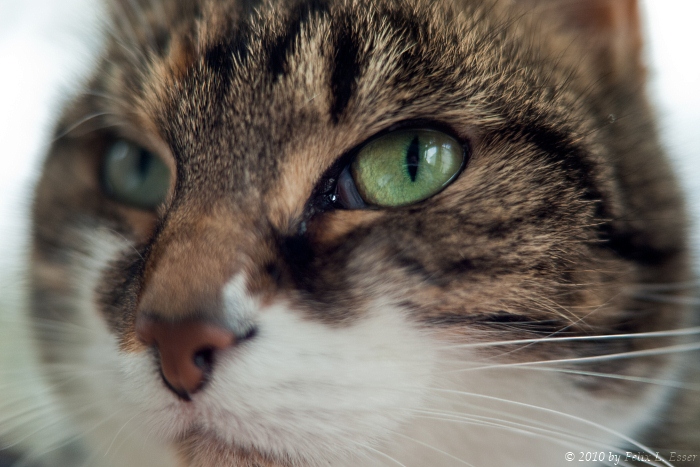
"Eye of the Tiger" | Olympus E-P1 + Cosmicar/Pentax 25/1.4 @ f/1.4, 1/100 sec, ISO 250
Verdict
This is the hardest part of any essay – be it scientific or just for fun. Having said so much on so many different aspects, it’s hard to come to a “final” conclusion. To begin with, let me re-state some of the things I said before.
- The lens is small, light, fast and affordable – although manual in operation.
- Its 50mm eq. focal length and f/1.4 (nominal, f/1.7 actual) initial aperture make it a nice allrounder for everyday use.
- It’s sharp from the beginning (razor sharp in fact when stopped down), produces some very nice (imho) bokeh, but suffers from distortion, vignetting and minor fringing issues.
- It has a rather warm colour signature (compared to the Panasonic 20/1.7), which again I like very much.
Now is it a lens for you? Well, that depends on the following criteria:
- Are you looking for a small, fast, normal, and above all affordable manual prime lens for your m4/3 camera? Then yes.
- Do you need autofocus and macro capabilities? Then no.
- Do you find that some minor optical shortcomings cann add to a lens’ character and give the pictures a unique look? Then yes.
- Are you looking for creamy smooth, Leica-like bokeh and absolute optical perfection? Then no.
- But above all: Do you fancy strange and exotic gear, and do you like to pimp your m4/3 camera to make it unique? Then most certainly yes!
For me, personally, it has become my favourite, my allround-everyday-glued-to-my-camera-strangely-in-love-with-lens. But as it is with gear, I might easily fall for something else some day, and this lens might then end up collecting dust in a dark corner on a shelf somewhere …
Sample Pictures
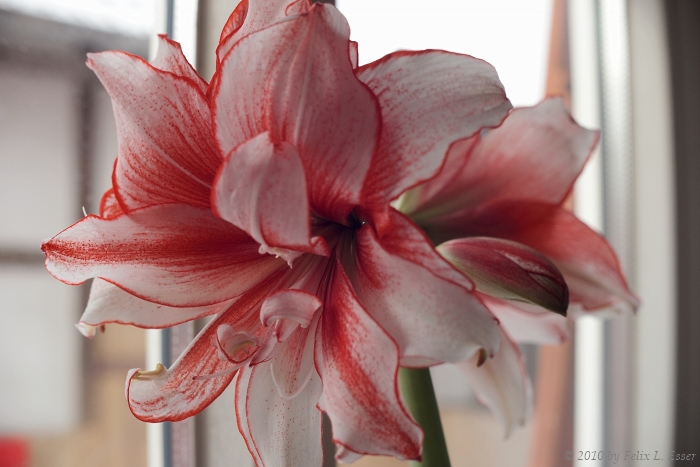
"Amaryllis" | Olympus E-P1 + Cosmicar/Pentax 25/1.4 @ f/1.4

"Broken window" | Olympus E-P1 + Cosmicar/Pentax 25/1.4 @ f/4, 1/640 sec, ISO 200 | Added vignetting in Lightroom
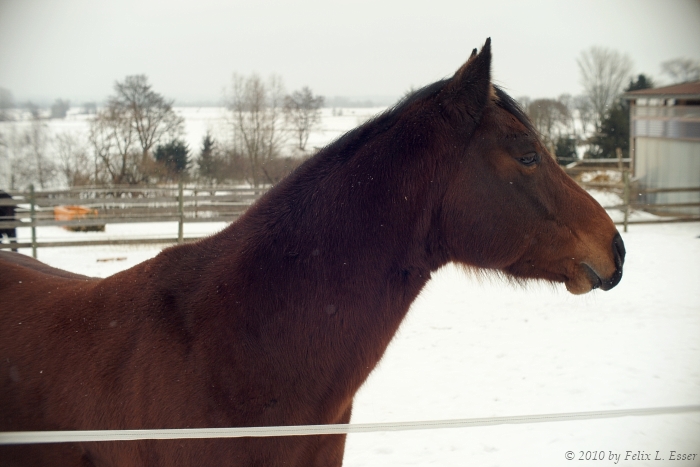
Olympus E-P1 + Cosmicar/Pentax 25/1.4

"Still life with oranges, tomatoes and bananas" | Olympus E-P1 + Cosmicar/Pentax 25/1.4 @ f/1.4, 1/125 sec, ISO 400 | Added vignetting in Lightroom
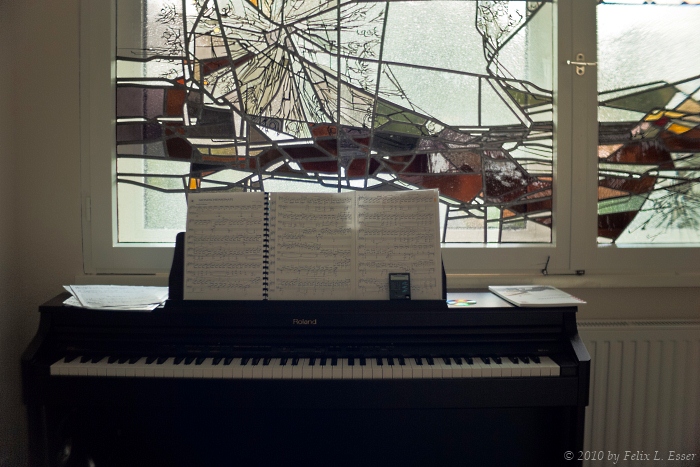
"The piano" | Olympus E-P1 + Cosmicar/Pentax 25/1.4 @ f/1.4, 1/125 sec, ISO 200

"Hello kitty" | Olympus E-P1 + Cosmicar/Pentax 25/1.4 @ f/1.4, 1/160 sec, ISO 200

Olympus E-P1 + Cosmicar/Pentax 25/1.4 @ f/1.4, 1/60 sec, ISO 1600 | Added vignetting in Lightroom

"Supper" | Olympus E-P1 + Cosmicar/Pentax 25/1.4 @ f/1.4, 1/13 sec, ISO 400
Have I forgotten anything? Do you have any questions? Then please let me know, and I’ll try to answer!
Also, don’t forget to look at the other pictures I took with this lens!
Buy the Pentax 25mm f/1.4 C-mount TV lens from B&H Photo Video Audio!

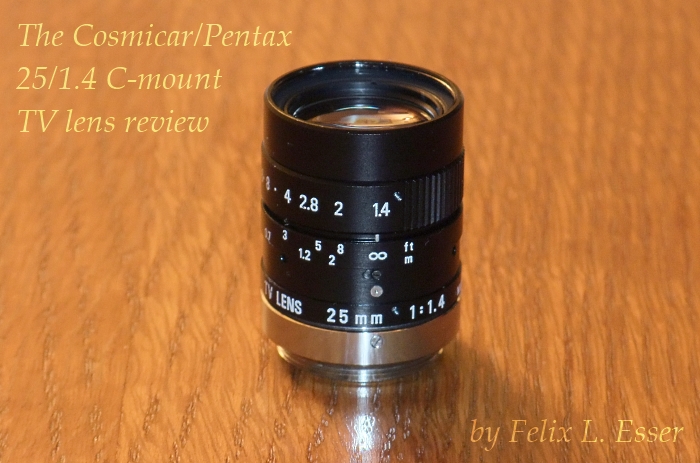


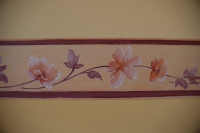









Would be nice to see some side by side of this lens and Pana 20mm f1.7.
Tom, I have actually already done a little side-by-side with the Lumix here. Is there anything special you would like to see compared (that I didn’t cover in the aforementioned post)?
Thanks for this review! How easy is it for you to focus in low light when wide open? Do you always magnify the view at f/1.4?
Also, how do you explain the light loss f/1.7 vs f/1.4 since it’s all relative to the focal length?
The depth of field at f/1.4 is equivalent to that of 25mm f/1.4 lens or that of an f/1.7? The whole light loss got me scratching my head.
Elie, you’re welcome!
In low light – that depends on how low the light is. But I’d say it’s more difficult than in good light. Sometimes images turn out acceptably sharp, sometimes they seem a little oof. At 1.4 I always magnify (in a second step, after pre-focusing without magnification), since there is still a slight error rate even when focus seems good without magnification.
As concerns the light loss – I have no explanation for that. Either they simply called it an f/1.4, but in fact it lets only an f/1.7 amount of light pass (meaning max aperture is in fact smaller than 25/1.4mm), or maybe it is due to the lens’ age, so that the lens elements aren’t as clear anymore as they were/should be? I have no idea.
I sadly haven’t got another 25/1.4 lens to compare bokeh too, all I can say is that it creates more bokeh than the 20/1.7. Again, I do not know if this is only due to the longer focal length (meaning REAL 1.7 aperture) or if it is in fact 25/1.4 bokeh, but just the image isn’t as bright at f/1.4 as it should.
I really loved this amazing article. Please keep it up. Greets!.
[…] Dieser Eintrag wurde auf Twitter von 黑毛和牛 erwähnt. 黑毛和牛 sagte: 一陣入呢支玩下先: Cosmicar/Pentax 25/1.4 C-mount TV lens review http://bit.ly/bghPFF […]
Thank you for your review, it helps me a lot in choosing between 20 1.7 and this 25 1.4
May I ask which C-m43 adaptor should I use? I found some a lot cheaper than RJ or Hawk Peng but don’t know which one should I get exactly. Thank you.
Tom, thanks for your comment! I find it interesting that you’re contemplating between the 20/1.7 and a C-mount lens As concerns the adapters, I’m afraid I can’t help you much, as I haven’t tested different models. All I can say is that mine’s from Kipon, is made of metal and works great. Focus goes a bit beyond infinity, which I think is better than not going to infinity at all. For close focusing you can still screw the lens outward a little.
As concerns the adapters, I’m afraid I can’t help you much, as I haven’t tested different models. All I can say is that mine’s from Kipon, is made of metal and works great. Focus goes a bit beyond infinity, which I think is better than not going to infinity at all. For close focusing you can still screw the lens outward a little.
Regards, Felix
This brings me back to the time when we tried the Jupiter lens on 5D. The out of focus has it’s own character which might be put into good use by some hands. Just not sure if commercially will be accepted.
Hi I have two of these lenses and I was wondering how much they are worth to sell? They are both new and in the packaging.
The latest version sells for ~ US-$ 90 at B&H Photo. I purchased my older, used lenses (2 pieces) from eBay for about US-$ 50. I hope this answers your question
Which would you choose between, the SLR magic lens or this one for the Sony NEX 5? Also, does it come with a mount? Is this separate?
I don’t think this lens is suited for the NEX series (or for any camera with an APS-C sensor, for that matter), because its image circle is barely large enough to fill the smaller Micro Four Thirds sensor — that’s why you get vignetting and blurry edges with this on the E-P1. For the NEX, a lens with a similar field of view and speed would be the 35mm f/1.7. Either the one from SLR magic, or any of those that you can find on eBay.
Hope I could help!
[…] […]
[…] […]
great photos! I really like the look of this lens.
I just bought a Panasonic gx-1 and was wondering if this would be appropriate for its sensor? I’m not sure of the lingo but I believe it’s called a “crop sensor”.
Hi Sam, thanks for stopping by! The GX1 does infact use the same sensor size as the Olympus E-P1 on which I tested the Cosmicar. It also has a 2x crop sensor, meaning this 25mm lens renders an image comparable to that of a 50mm “normal” lens.
Thanks a lot for this great review. Helped me a big deal!